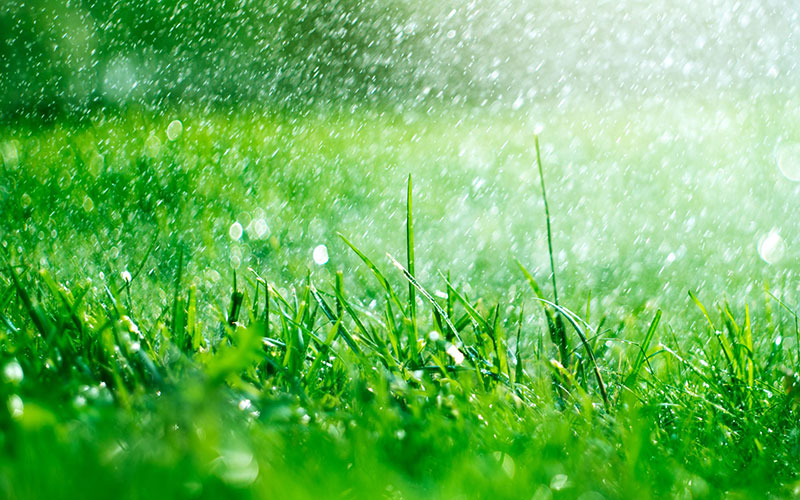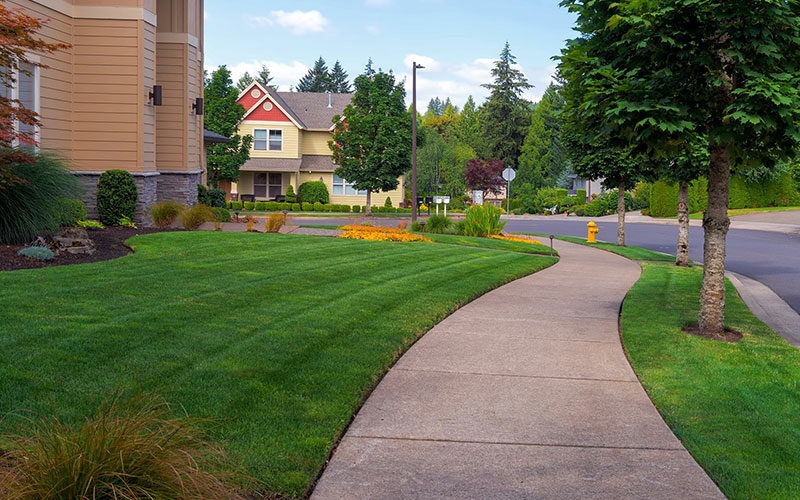Advertisement
Maintaining a green, lush lawn is not just about aesthetics. It’s about creating a serene outdoor environment and increasing the value of a home. Unfortunately, many homeowners struggle with achieving the perfect lawn. But with the right advice and approach, it’s within reach.
Before exploring commercial lawn care services, here’s a guide filled with expert tips to transform any green patch into a neighborhood gem.
- Water Deeply But Infrequently
Light, frequent watering can lead to grass that relies on constant watering and may encourage superficial root growth. Instead, give your lawn a deep soak, aiming for about one to one and a half inches of water each session. This approach ensures that the soil absorbs moisture deep enough to nourish the grass roots, promoting robust growth.
Watering deeply yet sparingly also conserves water and fosters more drought-resilient lawns. If possible, aim to water during the early morning or late evening to reduce evaporation.
- Mow At The Optimal Height
When it comes to your lawn care program, one of the tricks to include is mowing at the correct height. Avoid removing more than a third of the grass blade in a single cut. Cutting too short can stress the grass, making it more susceptible to diseases and impairing its ability to photosynthesize efficiently.
Keep your mower blades sharp to ensure a clean cut. Dull blades tear the grass, making it look untidy and more susceptible to pests.
Moreover, various grass species have specific recommended mowing heights. Being aware of the ideal height for your grass type can substantially improve your lawn’s health and aesthetics.
- Fertilize Wisely

Like all plants, grass requires nutrition to grow. This is why fertilizers play a crucial role in lawn maintenance, as they supply essential nutrients. However, it’s not merely about scattering fertilizer and hoping for the best. Here’s how to do it wisely:
- Understand The Necessary Nutrients: Different grass types have distinct requirements. Most fertilizers contain nitrogen, phosphorus, and potassium. It’s essential to know which nutrient your lawn craves the most. For example, nitrogen usually enhances green growth.
- Timing Matters: Fertilizing at the wrong time can do more harm than good. For cool-season grasses, early fall is often the best time, as the grass stores nutrients for winter. For warm-season grasses, late spring is ideal when the grass is actively growing.
- Slow-Release vs. Quick-Release: Slow-release fertilizers deliver nutrients over a more extended period, while quick-release gives an instant nutrient boost. Determine which is best for your lawn’s needs and the season.
- Follow The Manufacturer’s Instructions: Excessive fertilizer can harm the grass and its roots. Ensure accurate application by using a spreader for uniform distribution.
Keep in mind that fertilizing is an art backed by science. By understanding the specific needs of your lawn and responding appropriately, you’ll give it the best chance to thrive.
- Combat Weeds Early
Weeds can choke out your grass, depleting essential nutrients. Addressing them in their early stages prevents them from establishing dominance. When allowed to mature, certain weeds can produce thousands of seeds, leading to more extensive infestations.
Regular lawn inspections and prompt action against emerging weeds can save considerable effort later. Consider applying a pre-emergent herbicide in the spring to prevent weed growth. If you prefer a natural method, regular mowing can help control weeds.
- Aerate The Soil
Compacted soil can limit the movement of water, air, and nutrients to grass roots. Aeration, the process of creating small holes in the soil, rejuvenates the roots. It improves water absorption and aids in breaking down thatch – a layer of organic debris on the soil surface.
Most lawns benefit from aeration once a year, ideally during the growing season. This simple process can substantially enhance your lawn’s overall health and look.
- Monitor For Pests And Diseases
A healthy lawn can still fall victim to pests like grubs or diseases such as fungus. Pests can cause noticeable brown spots or even devastate large areas, whereas diseases can proliferate rapidly, compromising the lawn’s health and beauty.
Keep an eye out for any unusual brown patches or areas where the grass seems to be thinning. If you notice these signs, act quickly. Consult a local nursery or landscaping expert for advice on treatment.
- Minimize Lawn Traffic
Consistent foot traffic can lead to soil compaction and worn-out patches. While lawns are meant to be enjoyed, consider designating pathways or stepping stones in high-traffic areas. This can help mitigate damage and maintain your lawn’s vibrancy.
- Stay Updated
Always be on the lookout for new lawn care tips and advice. Climate conditions, pest patterns, and best practices can change. Regularly consulting with experts or reading up on lawn care can keep your knowledge up-to-date.
Conclusion
Achieving a lush and healthy lawn isn’t rocket science, but it does require dedication and the right techniques. By following these expert tips, you’ll be on your way to creating a beautiful green space that not only looks amazing but also serves as a testament to your commitment and care. Remember, every lawn is unique, so adapt these tips according to your specific needs and watch your outdoor space thrive.

